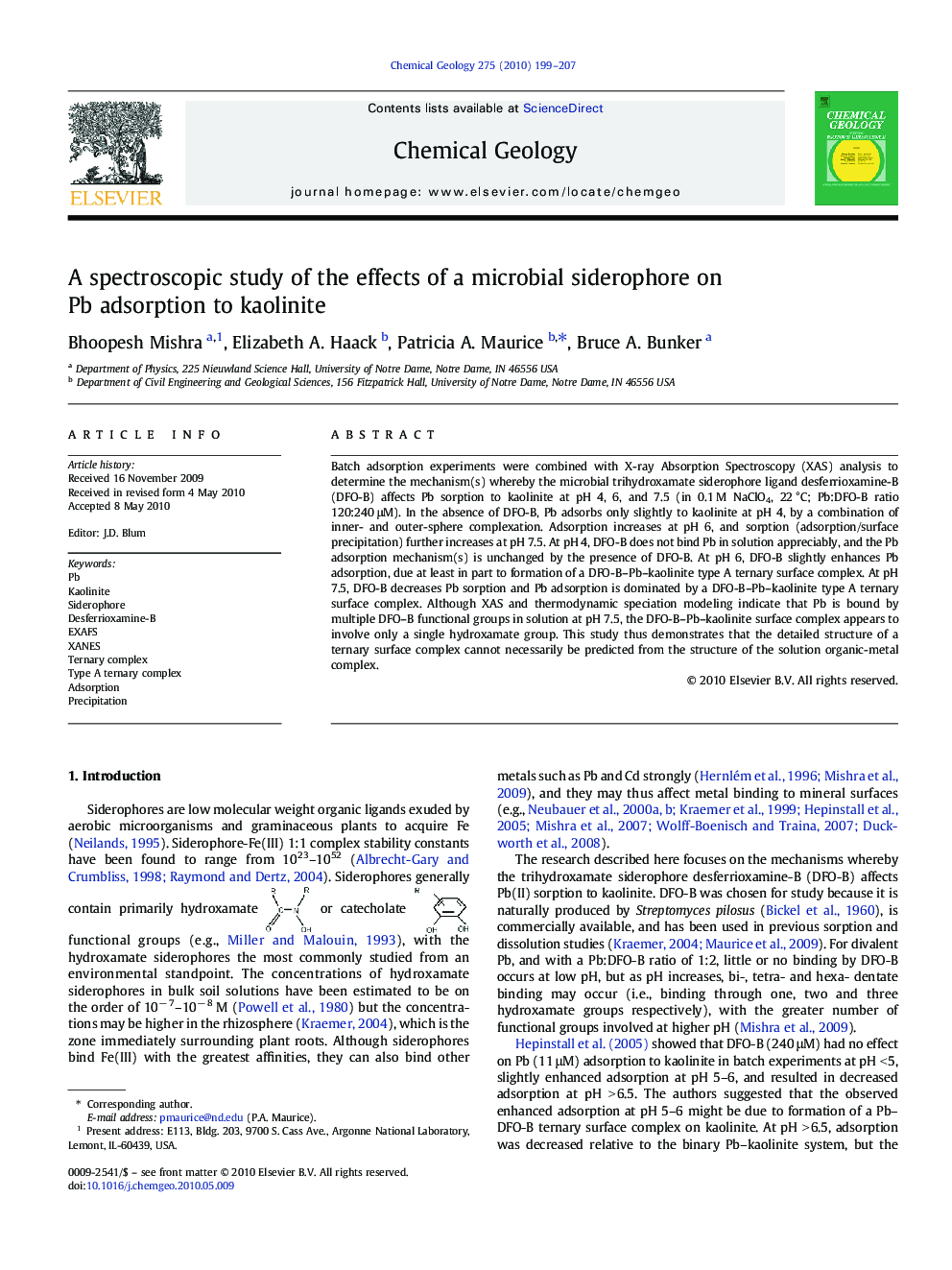| Article ID | Journal | Published Year | Pages | File Type |
|---|---|---|---|---|
| 6437047 | Chemical Geology | 2010 | 9 Pages |
Batch adsorption experiments were combined with X-ray Absorption Spectroscopy (XAS) analysis to determine the mechanism(s) whereby the microbial trihydroxamate siderophore ligand desferrioxamine-B (DFO-B) affects Pb sorption to kaolinite at pH 4, 6, and 7.5 (in 0.1 M NaClO4, 22 °C; Pb:DFO-B ratio 120:240 μM). In the absence of DFO-B, Pb adsorbs only slightly to kaolinite at pH 4, by a combination of inner- and outer-sphere complexation. Adsorption increases at pH 6, and sorption (adsorption/surface precipitation) further increases at pH 7.5. At pH 4, DFO-B does not bind Pb in solution appreciably, and the Pb adsorption mechanism(s) is unchanged by the presence of DFO-B. At pH 6, DFO-B slightly enhances Pb adsorption, due at least in part to formation of a DFO-B-Pb-kaolinite type A ternary surface complex. At pH 7.5, DFO-B decreases Pb sorption and Pb adsorption is dominated by a DFO-B-Pb-kaolinite type A ternary surface complex. Although XAS and thermodynamic speciation modeling indicate that Pb is bound by multiple DFO-B functional groups in solution at pH 7.5, the DFO-B-Pb-kaolinite surface complex appears to involve only a single hydroxamate group. This study thus demonstrates that the detailed structure of a ternary surface complex cannot necessarily be predicted from the structure of the solution organic-metal complex.
